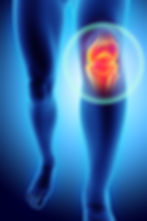Understanding Knee Pain: Causes and Healing Methods
- rockstarneil
- Jan 15, 2024
- 2 min read
Updated: Jan 16, 2024

Knee pain is a common ailment that can affect individuals of all ages. Whether it's caused by an injury, overuse, or underlying medical conditions, addressing knee pain is crucial for maintaining mobility and overall well-being. In this article, we will explore the various causes of knee pain and discuss effective healing methods to alleviate discomfort and promote recovery.
Causes of Knee Pain:
Injuries:
Sprains and Strains: Overstretching or tearing ligaments and muscles around the knee can lead to pain and swelling.
Fractures: Broken bones in the knee, often resulting from accidents or falls, can cause intense pain.
Degenerative Conditions:
Osteoarthritis: A common form of arthritis where the cartilage in the knee joint wears down over time, causing pain and stiffness.
Rheumatoid Arthritis: An autoimmune disorder that can affect the knee joint, leading to inflammation and pain.
Overuse and Misuse:
Tendonitis: Inflammation of the tendons around the knee due to repetitive activities.
Bursitis: Inflammation of the bursae, fluid-filled sacs that cushion the knee joint.
Medical Conditions:
Gout: Accumulation of uric acid crystals in the knee joint, causing sudden and severe pain.
Infections: Bacterial or viral infections can lead to knee pain and swelling.
Healing Methods for Knee Pain:
Rest and Ice:
Resting the affected knee allows the tissues to heal, while applying ice helps reduce inflammation and numb pain.
Compression and Elevation:
Using a compression bandage can help control swelling, and elevating the leg can further reduce fluid buildup.
Medications:
Over-the-counter pain relievers, such as ibuprofen or acetaminophen, can provide temporary relief from knee pain and inflammation.
Physical Therapy:
Tailored exercises can strengthen the muscles around the knee, improve flexibility, and enhance joint stability.
Bracing and Supports:
Knee braces or supports can provide stability and alleviate pressure on the affected area during daily activities.
Weight Management:
Maintaining a healthy weight reduces stress on the knee joints, particularly for individuals with arthritis.
Injections:
Corticosteroid injections can help reduce inflammation, while hyaluronic acid injections may improve joint lubrication in cases of osteoarthritis.
Surgery:
In severe cases, surgical interventions such as arthroscopy, partial knee replacement, or total knee replacement may be recommended.
Alternative Healing Methods:
Acupuncture is an Eastern Medicine that can be used for relief of knee pain.
Shiva Murti has been shown to be the fastest, most cost effective way to treat knee pain. Often with just one session, knee pain and its inflammation can disappear.
Knee pain can significantly impact daily life, but understanding its causes and implementing appropriate healing methods can facilitate recovery. It's essential to consult with a healthcare professional for an accurate diagnosis and personalized treatment plan. Whether through conservative measures, surgical interventions or Alternative Healing Methods, addressing knee pain promptly is key to maintaining optimal joint health and improving overall quality of life.
Here is a testimonial of knee pain disappearing in minutes using Shiva Murti.